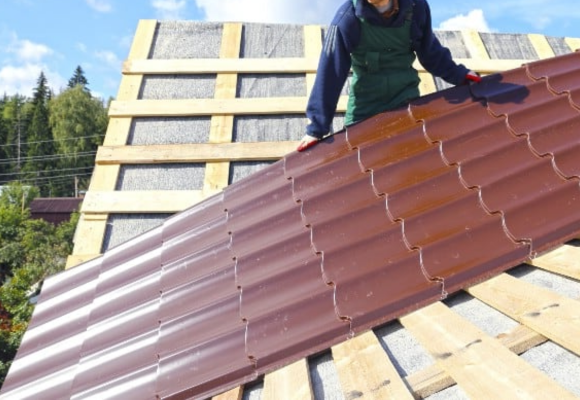With its sleek finish, durability, and energy efficiency, metal roofing has rapidly become the preferred roofing material for many homeowners and contractors.
But beneath its metallic sheen lies a crucial component that ensures its longevity and performance: the humble furring strip. But why are these strips so vital to the metal roofing system?
Let’s delve deep into their role and importance.
Thermal Break and Ventilation
Furring strips create a vented space between the existing roof and the new metal roofing. This space acts as a thermal break, reducing heat transfer during summers and cold during winters.
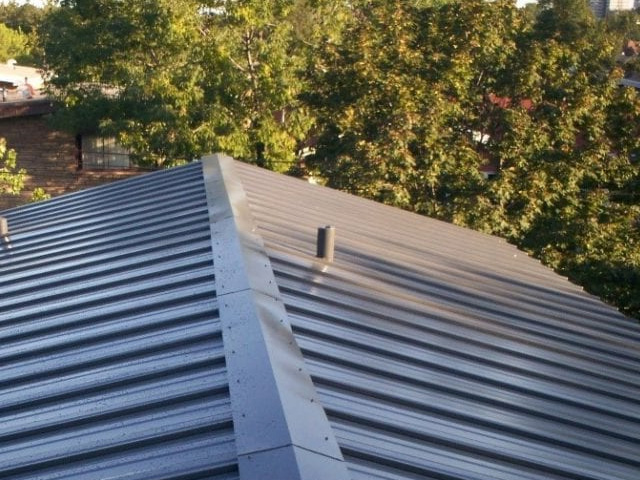
As a result, homes stay cooler in the summer and warmer in the winter, leading to reduced energy bills.
Preventing Condensation
Metal roofing can sometimes lead to condensation issues, especially in humid climates.
Furring strips help create a barrier that reduces the chances of condensation forming underneath the metal panels.
By spacing the strips between twenty-four to thirty inches apart, moisture can evaporate, ensuring the roof’s structural integrity.
Enhanced Durability
Metal might be tough but can buckle or warp under extreme temperature fluctuations.
Furring strips provide that added support layer, ensuring the metal remains in its desired shape, safeguarding against potential leaks or damages.
Compatibility with Existing Roofing
For homeowners looking to retrofit their homes with metal roofing over existing shingles, furring strips act as the bridge.
They connect the old shingles with the new metal sheets, allowing for a smoother installation without removing the previous roofing.
As more homeowners are drawn to the benefits of metal roofing, one of the predominant questions is how to seamlessly transition from traditional roofing materials, like shingles or tiles, to metal.
This transition is vital not only for aesthetic reasons but also for the structural integrity and efficiency of the roofing system.
Herein lies the role of furring strips, the unsung heroes ensuring this compatibility.
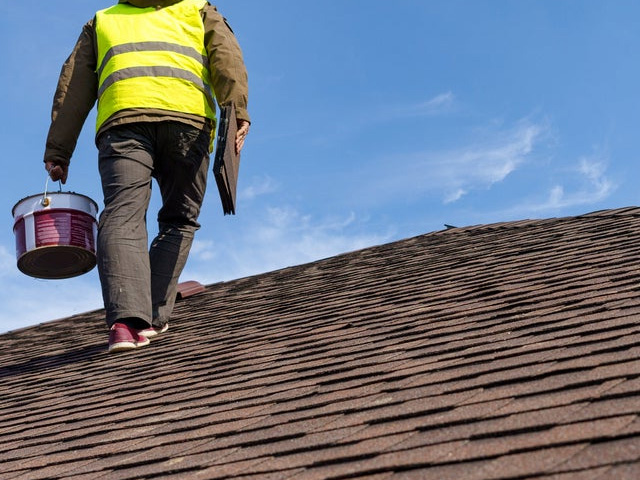
Layered Integration
Furring strips allow homeowners to install metal roofing directly over their existing shingles without requiring complete removal.
This layered integration means less waste, reduced costs, and a faster installation.
Elevation and Alignment
Traditional roofing materials might not always have a uniform surface. Furring strips act as leveling agents, providing an even platform for the metal sheets.
This ensures that the metal lies flat and securely, reducing potential areas of vulnerability.
Optimal Drainage
Ensuring that water efficiently drains off the roof is paramount.
Using furring strips provides a clear pathway for water to flow, preventing moisture accumulation between the old roofing material and the new metal panels.
This reduces the risk of leaks and prolongs the lifespan of both roofing layers.
Improved Noise Insulation
While metal roofs are sturdy, they can sometimes be noisy during heavy rain.
Furring strips can reduce noise penetration, offering a quieter indoor environment during such weather conditions.
One of the major concerns homeowners express when contemplating a switch to metal roofing is the potential noise factor, especially during rainstorms or hail.
The characteristic ‘drumming’ sound can be a drawback for some, especially if they’re used to the sound insulation provided by traditional shingle roofs.
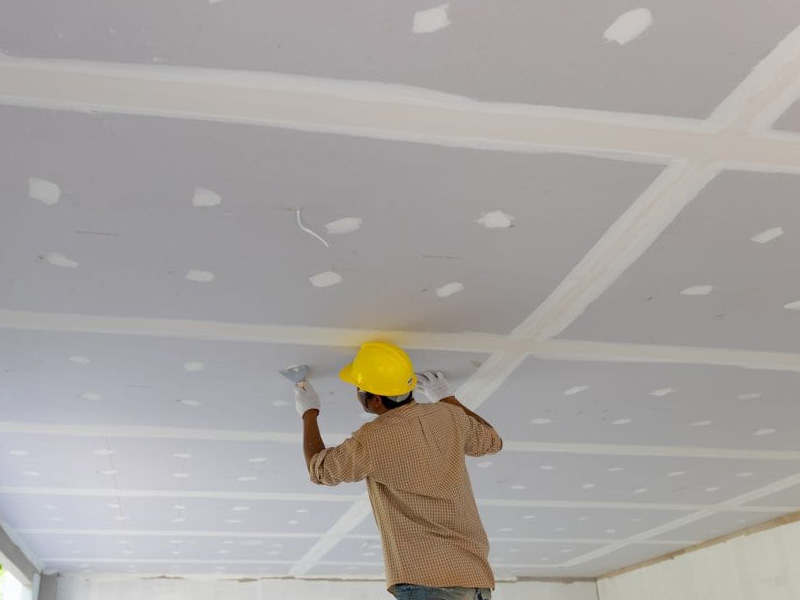
However, this concern is effectively addressed with the incorporation of furring strips. Here’s how:
a. Buffer Zone Creation: Furring strips create small airspace when installed between the existing roof and the metal overlay.
This airspace acts as a buffer zone, diminishing the direct impact of rain or hail on the metal, thus reducing the noise generated.
b. Reduction of Resonance: The potential for noise resonance increases when metal sheets are directly installed onto a solid surface without any gap.
The furring strips break this direct contact, helping to minimize the reverberation of sound waves, leading to quieter interiors.
Aiding in Proper Installation
Securing metal roofs requires precision. Furring strips ensure an even surface for the screws to attach, reducing the risk of them loosening due to temperature-induced expansion and contraction.
This is especially crucial in homes with plywood roofs where screws can easily work their way out.
Enhancing Roof Performance in Special Structures
Homes with features like skylights, dormers, and chimneys benefit immensely from furring strips.
They offer the required support around the edges of these structures, ensuring the metal roof seamlessly integrates without leaving vulnerable spots.
Every home is unique, which elevates a home’s aesthetic appeal but also introduces unique challenges when installing metal roofing.
In such scenarios, furring strips become invaluable, ensuring that the metal roofing seamlessly integrates and performs optimally. Here’s how:
a. Customized Support: Special structures like skylights or dormers often have intricate designs or junctions.
Furring strips can be custom-cut and positioned to support these unique structures, ensuring the metal roofing conforms perfectly to their contours.
b. Preventing Water Infiltration: Chimneys, dormers, and other protruding structures can be potential water entry points.
Furring strips elevate the metal panels slightly, facilitating better water runoff around these structures and reducing the chance of leaks.
Underlayment Support
While metal roofing does require an underlayment to protect from potential leaks, the use of furring strips aids in holding these underlayments more securely.
They also provide a foundation for other options like woven polymer underlayment, known for its superior quality as a noise barrier compared to traditional materials.
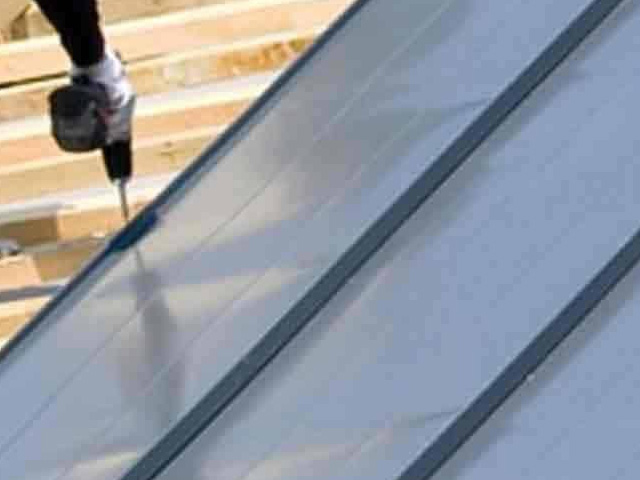
Conclusion
Metal roofing promises durability and a modern aesthetic appeal.
However, underlying components like furring strips are critical for it to live up to its potential.
By understanding their importance and ensuring proper installation, homeowners can enjoy the benefits of metal roofing without the common associated pitfalls.
Frequently Asked Questions
Do metal roofs need furring strips?
Yes, metal roofs often benefit from furring strips. While it’s possible to install metal roofing directly over an old roof, furring strips help create a vented space between the old roof and the new metal sheets.
This space provides thermal breaks, prevents condensation, ensures an even surface for installation, and can assist with noise insulation.
However, the need for furring strips might depend on specific project requirements and local building codes.
What are furring strips used for in roofing?
Furring strips are used in roofing to create a flat, even, and raised surface for installing roofing materials, especially metal roofing.
Their primary purposes include:
a. Creating a Thermal Break: They provide a gap between the existing roof and the metal sheet, acting as a thermal barrier to reduce heat transfer.
b. Preventing Condensation: The gap prevents condensation from forming under the metal panels, especially in humid conditions.
c. Ensuring Proper Alignment: Furring strips help level the roof surface, ensuring the metal sheets lie flat and securely.
d. Noise Insulation: The added space can reduce noise penetration, particularly during heavy rain. Aiding Drainage: Furring strips can help facilitate better water runoff, reducing the risk of moisture accumulation.
What is the best thing to put under a metal roof?
An underlayment is essential beneath a metal roof to act as a barrier against moisture, ensuring the roof’s longevity and preventing leaks. There are several types of underlayments suitable for metal roofs:
a. Synthetic Underlayment: Made of polymers, this underlayment is lightweight, water-resistant, and durable.
b. Felt Underlayment: Often referred to as “tar paper,” this is a traditional option made of organic or fiberglass substrate saturated with asphalt.
c. Self-adhering Membrane: This is a waterproof, rubberized underlayment with an adhesive backing. It’s particularly useful in challenging areas like valleys or roof edges.
d. Woven Polymer Underlayment: Known for its superior noise barrier properties and durability. The best underlayment often depends on the region’s climate, building codes, and specific project requirements.
Do you need to put strapping under metal roofing?
Strapping, often referred to as “purlins” or “battens,” is a method of installing horizontal wooden strips or metal channels across the roofing structure before installing the metal roof.
The necessity of strapping depends on various factors:
Roof’s Existing Condition: For homes with uneven roof surfaces or over old shingles, strapping can help create a flat and even surface.
Ventilation and Thermal Benefits: Strapping can provide space for ventilation, reducing the risk of condensation and acting as a thermal barrier.
Building Codes: Some local building codes might require strapping for metal roofing installation.
Roof Design: Strapping might be an essential part of the installation process for certain metal roofing systems or designs.
It’s always advisable to consult with a roofing professional or local building codes before deciding on the strapping method.
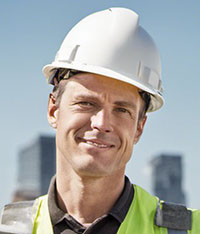
Arthur is a skilled roof worker with over 10 years of experience in the industry. He started his career as an apprentice and worked his way up to become a foreman.
When he’s not working on roofs, John enjoys with his family or writing posts. He is also a passionate cyclist.

